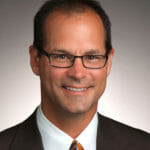
Older adults are the largest growing demographic in the United States, and creating age-friendly environments for them is essential to ensure people can live their best lives as they age. New York was designated the first age-friendly state in the country by AARP and the World Health Organization with dedicated and coordinated efforts to create environments that help individuals of all ages grow up and grow older successfully and to innovate to assure better health and well-being.
I am a big believer in the need to help older adults age healthily in a holistic manner through impactful partnerships between state and local government agencies and the private sector. I believe that as people live longer and healthier lives, this approach will include addressing all the social determinants of health.
The value proposition of older adults in New York
You don’t have state and national economies without the participation of older people. If this population goes ignored or discarded, it will have grave effects on the state and national economy.
According to New York state and local data, there wouldn’t be a thriving New York economy without older adults. About 80% of New York State Retirement System payouts stay in New York, which means $10.6 billion annually in the local economy. Boomers alone spend $157 billion on travel every year. Older adults are also the number one contributors to philanthropy and charity. Older adults assure that non-profits are up and running through their hours of volunteer work. Approximately 935,000 individuals age 55+ contribute 495 million hours of service at an economic value of $13.8 billion to New York non-profits.
With more than 10 million job vacancies in the U.S., there will be more and more older adults filling these positions. In large part because many older adults don’t have money saved for retirement. A 2019 research study found that 22% of adults in the U.S. have less than $5,000 saved for retirement and another 15% have no retirement savings at all. This same survey reported that people believe there is a 45% chance they’ll outlive their savings.
New York State Office for the Aging’s (NYSOFA’s) ideas to integrate the various government sectors (labor, housing, nutrition, transportation and more) aren’t new. In fact, these were already part of NYSOFA’s strategy during the COVID-19 pandemic. NYSOFA received more than $149 million in federal stimulus funding that was distributed to all counties to meet a variety of needs including:
- Home-delivered meals and grab-and-go meals
- Shopping and supply delivery
- Prescription drug delivery
- Critical transportation — for example, to dialysis and cancer treatments
- Combating social isolation
- Shifting service delivery to virtual programming where appropriate
- Elder abuse mitigation and scam prevention via education and outreach
- Helping individuals get vaccinated at vaccine sites and in the home
Future areas of interconnectedness: job skills, financial security
New York is renewing and looking to expand its partnership with GetSetUp, the largest virtual social learning platform customized for older adults. We are looking to use GetSetUp’s job services programs to help older adults remain financially secure.
We are really excited to collectively embark on a long-term partnership with GetSetUp. Considering what we did in a year getting 150,000 people on the platform connected and utilizing their technology skills, we can already see how this will be useful for so many areas that matter to older people.
GetSetUp shows a proactive nature in working with us by researching our needs. We have almost 8 million jobs open, and older adults, for a variety of reasons, need work. GetSetUp already trains people to use tech like Zoom, iPhones, and more. They can help tap the skills and talents of this amazing population who still want to work to align them with these opportunities. We are also working with them and looking at offering nutrition classes aligned with SNAP-ed and classes on other major issues.
Trailblazing holistic aging practices with a message of empowerment
Becky Preve, the executive director of New York Aging, believes that highlighting the value proposition of older people and the positive landscape of aging makes a huge difference in offering care and the holistic health of the residents overall: “Our residents are proud to be part of our services. New Yorkers are crazily independent, and it’s difficult for most people to say, ‘I need help’. We ensure that people feel empowered and that they deserve these services. They are essential to the economy. These people have worked their whole lives and contributed to these services for others, they can use them too when they need them, not just in a crisis.”
Overall, New York’s government works to leverage each department’s assets to create a mosaic of holistic care. We partner with the public, counties, and private stakeholders to serve New Yorkers in many different areas.
In our state, if you are in a position to help people, you do it. There are no risks to figuring out new ways to help people. One call to the Office for the Aging or the New York Connections Program (1-800-342-9871) gets older adults in touch with a cross-functional support team.
We are 15 to 20 years ahead of some other states we have spoken with. I think other states can learn what is possible through our example. States can go outside of the box under the Federal Americans Act. There is a ton of flexibility to get the job done if your team trusts each other and are strong advocates for modernization.
States depend on older adults to fuel their economy whether they are conscious of it or not, so they need to assist them if they want to assure economic stability.
Greg Olsen is director of the New York State Office for the Aging.



